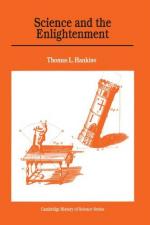
|
| Name: _________________________ | Period: ___________________ |
This quiz consists of 5 multiple choice and 5 short answer questions through Chapter 2, Mathematics and the Exact Sciences.
Multiple Choice Questions
1. Who stated in the introduction to their book that, "There are no figures in this book. The methods that I demonstrate here require neither constructions, nor geometrical or mechanical reasoning, but only algebraic operations, subject to a regular and uniform development"?
(a) Euler.
(b) Hermann.
(c) Lagrange.
(d) Basel.
2. What term did Toland invent for the belief that God and nature were one and the same, according to the narrator in Chapter 1?
(a) Academism.
(b) Mechanism.
(c) Deism.
(d) Pantheism.
3. Chapter 2 states that ________ had been created to deal with the problem of motion and that the new mathematical techniques discovered in the eighteenth century were all responses to the challenges of mechanics.
(a) Calculus.
(b) Statistics.
(c) Arithmetic.
(d) Geometry.
4. According to Chapter 1, who made Newton into a supreme rationalist whose laws of motion were a priori deductions of pure thought?
(a) Fontenelle.
(b) Roberts.
(c) Maupertuis.
(d) Marquis de l'Hopital.
5. In 1819, who gave a clue to the source of this pessimism when he wrote that "the power of our analysis is practically exhausted"?
(a) Diderot.
(b) Sylvestre-Francois Lacroix.
(c) Isaac Barrow.
(d) Joseph-Louis Lagrange.
Short Answer Questions
1. In the early years of the Enlightenment, the strongest support on the Continent for Newton's philosophy came from ________.
2. What was the name of the path by which an object slides from one point to another that is not on the same vertical line in the shortest possible time?
3. What was the name of the curve traced by the end of a string as it is unwrapped from another curve found in Chapter 2?
4. What was the name of the philosopher who had a passion for humanity, a desire to "do good," and a penchant for reform, according to Chapter 1?
5. The narrator reveals that vis viva was a measure of ________ to conserve his creation while "action" was a measure of his efficiency.
|
This section contains 309 words (approx. 2 pages at 300 words per page) |

|




